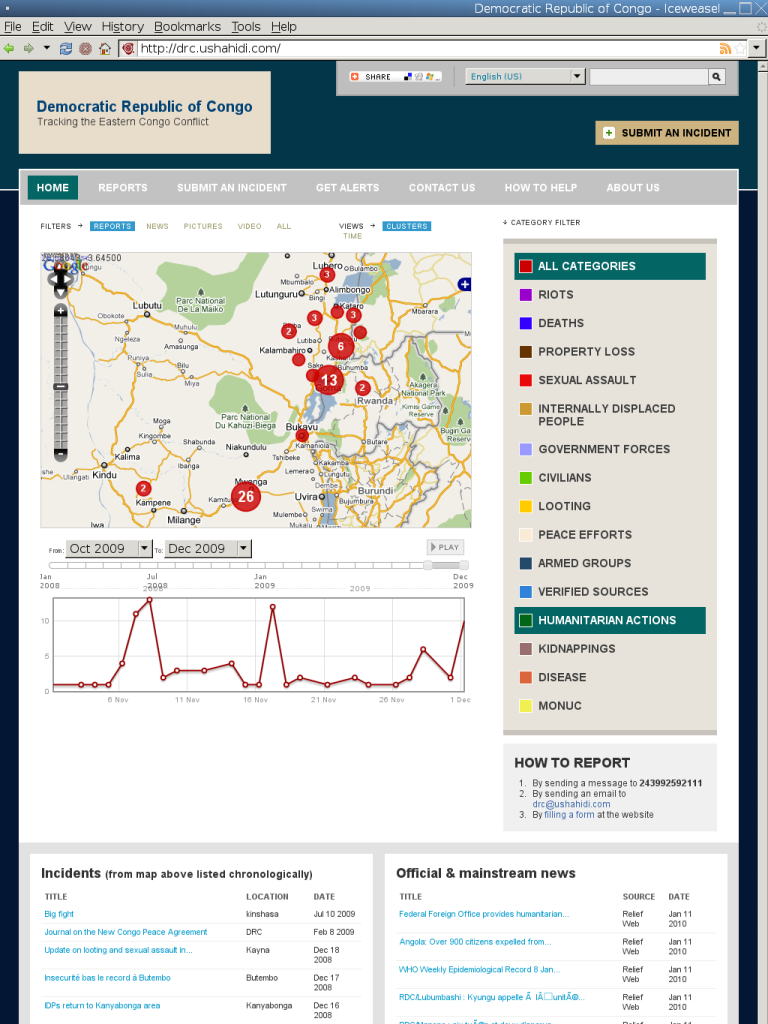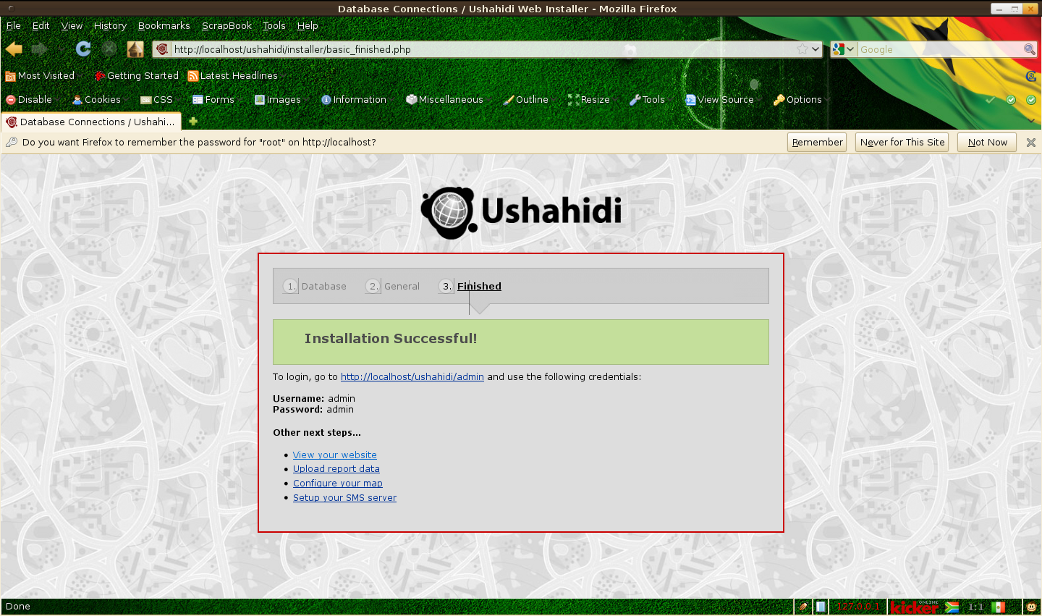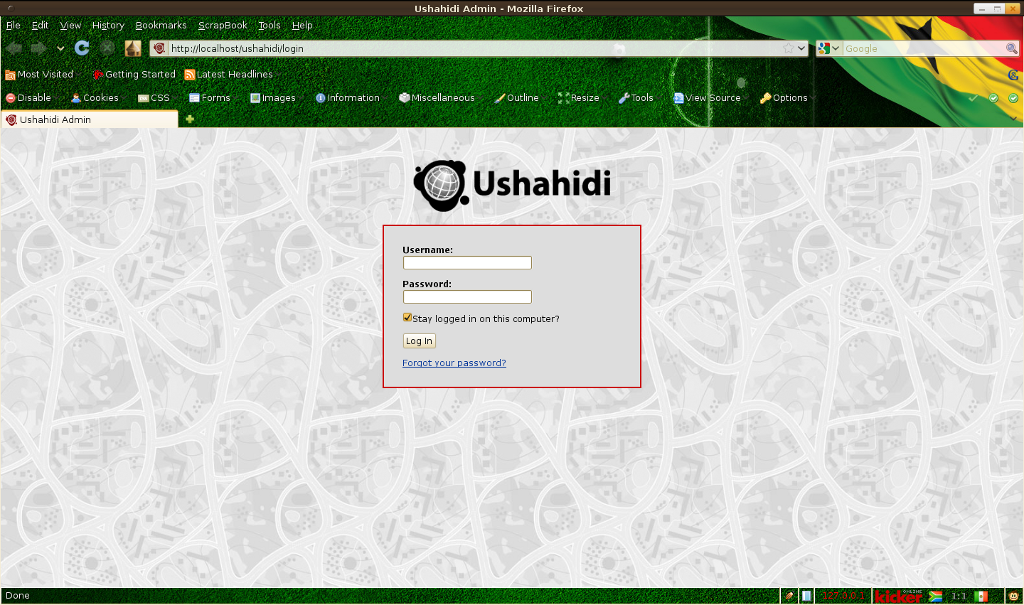
This guide describes how to:

Choose “Basic Installation”, “Let’s get started”, and it will prompt you for a few details. The database name is “ushahidi”, database user name is “user”, the password is also “user”. The database host is “localhost”. Then continue. In the General setup page choose a site name (title) for your website such as OSGeo demo and if you like a tag-line subheading as well. The email address it asks you for is used for receiving automatic submissions which it will process and add to the database and maps, and send automated reports from. For now set it to something like “ushahidi@localhost.localdomain” or “ushahidi@example.org” and “Continue”.
Note: If Ushahidi complains about this “Oops! We couldn’t make a connection to the database server with the credentials given. Please make sure they are correct.”. This means the installer script couldn’t create the database credentials. This has to be done manually before you can continue with the installation. Issue these commands assuming you have logged into the system as root.
“mysql -uroot -p” – This should prompt you for mysql server’s root password. Enter the root password if there is one, otherwise hit the enter key.
Then enter the command below to create a new user. “CREATE DATABASE ushahidi;” – This should create a database called ushahidi
Followed by this command.
“GRANT ALL PRIVILEGES ON ushahidi.* TO ‘user’@’localhost’ IDENTIFIED BY ‘user’;”
– This should create a username “user” and a password “user”
Now go back to the Ushahidi web installer step 2 and fill in the details.



The setup up README page is available locally in the /var/www/ushahidi/readme.html file.